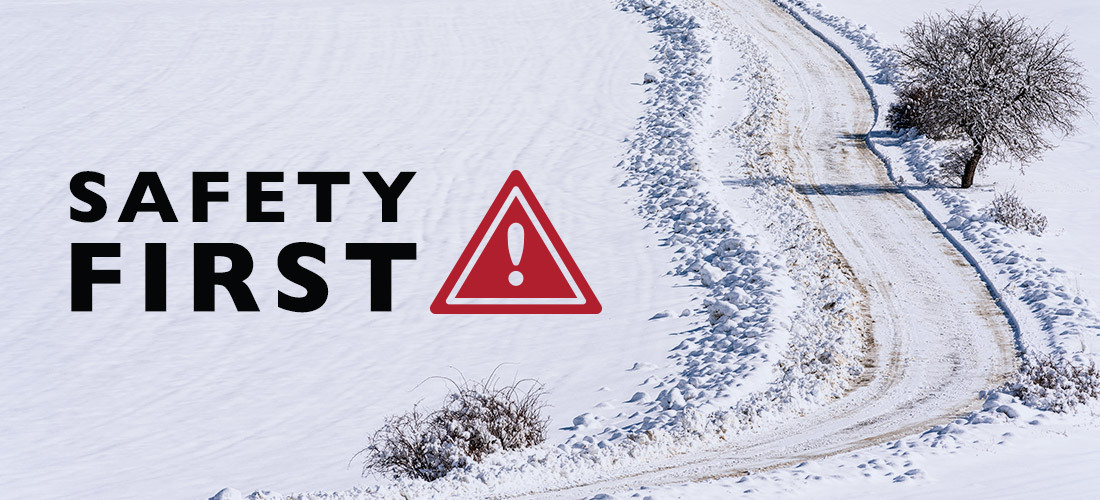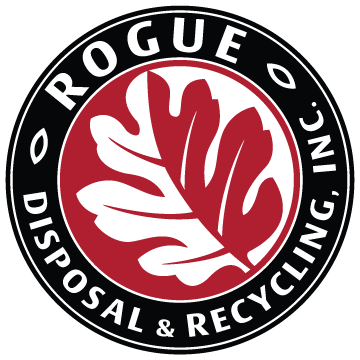The importance of wintertime road safety

Driving in the Rogue Valley during the winter can run the gamut — from snow and ice to fog and rain. Think about what that’s like for you in your vehicle. Then think about what it’s like for our drivers, behind the wheel of huge (and heavy) trash and recycling collection trucks. And consider the challenges of navigating the Transfer Station in White City during inclement weather. When adverse weather hits, it’s imperative to drive extra cautiously to keep everyone on the road and at our facilities safe. Here are some tips for driving around our trucks and navigating the Transfer Station when winter road conditions get challenging, plus a reminder about keeping our youngest residents safe during our winter snow days.
Winter weather and waste collection: Sharing the road safely
Winter weather creates hazardous driving conditions. Reduced visibility, slippery roads and the need for longer stopping distances make it crucial to be extra cautious around large vehicles like trash and recycling trucks during the winter months. It's vital to be extra vigilant and aware when sharing the road with these essential service vehicles during the winter months.
Here are some key winter driving safety tips to keep in mind when near our trucks:
- Increase following distance: In winter conditions, it takes all vehicles longer to stop. With large collection trucks, this is even more pronounced. When roads are snowy or icy, maintain a significantly greater following distance – at least 15 seconds, or even more if conditions are severe. This gives you ample time to react if the truck needs to stop suddenly due to conditions or collection stops.
- Reduce speed to match the conditions: This is paramount in winter. Even if the posted speed limit seems reasonable, adjust your speed to match the actual road conditions. Snow, ice and even heavy rain can drastically reduce traction. Slowing down gives you better control and reduces the risk of skidding, especially when approaching or following a large truck.
- Be extra cautious in low visibility: Fog, snow and heavy rain can severely limit visibility. When visibility is poor, turn on your headlights (and fog lights if you have them) and be even more attentive to your surroundings. Look for the truck's lights and reflective markings. Be prepared to stop if visibility suddenly drops.
- Anticipate longer stopping distances for trucks: Due to their size and weight, trash and recycling trucks require significantly more distance to stop than passenger vehicles — especially on slick winter roads. Never cut in front of a collection truck, and avoid stopping suddenly in front of one. Remember, even if you can stop in time, the truck behind you might not be able to.
- Listen for backup alarms: All of our trucks are equipped with backup alarms. During winter storms, visibility can be reduced, making it harder to see a truck reversing. When you hear the “beep-beep-beep” that signifies the truck is in reverse, pay extra attention and move safely out of the way immediately.
It’s also important to remember these key points that are specifically relevant to winter driving around large vehicles:
- Ice and snow can accumulate on truck mirrors, further reducing the driver’s visibility. Be extra mindful of their blind spots.
- Snowplows and sanding trucks often work in tandem with trash and recycling collection. Be aware of all these vehicles sharing the road during winter storms. And never pass a snow plow on the right-hand side!
Navigating the Transfer Station safely in winter weather
Winter weather can also make visiting the Transfer Station in White City more challenging. Please keep these safety tips in mind:
- Reduce speed on approach: Snow, ice and heavy rain can make the access roads and parking areas slippery. Reduce your speed well in advance of the Transfer Station entrance and drive cautiously within the facility.
- Be mindful of other vehicles: The Transfer Station often has a mix of vehicle types, from passenger cars and trucks to larger commercial vehicles. Be extra aware of your surroundings and give other vehicles ample space, especially when maneuvering around the different drop-off areas (recyclables, yard debris, batteries, etc.). Visibility can be reduced in winter weather, so take your time and be patient.
- Watch for pedestrians: Be especially cautious of pedestrians walking near drop-off areas and around the Transfer Station building. Reduced visibility and slippery surfaces increase the risk of accidents.
- Secure your load: Ensure your load is properly secured before you leave home. Icy or snowy roads can cause unsecured items to shift or fall off your vehicle, creating a hazard for yourself and others. This is especially important for items like tarps covering loads, which can blow off in winter winds.
- Use extra caution on concrete surfaces: The Transfer Station and Recycling Depot are both surrounded by concrete flooring, which can become extremely slippery when wet or icy. Wear sturdy, non-slip footwear and walk carefully, especially when carrying items.
- Follow posted signage and staff instructions: Pay close attention to posted signage directing you to the appropriate drop-off areas. Transfer Station staff are also available to provide guidance and assistance. Follow their instructions carefully to ensure a safe and efficient visit.
Snowy days mean children at play
Snow-covered yards, driveways and streets bring kids outside to play in full force. And while snow days can be exciting for kids, it adds an extra layer of challenges for driving.
Sleds, discs and toboggans, for example, have limited control. This means that if kids are coming down a hill in a neighborhood park or racing down a steep driveway, they may not be able to stop when they hit the street. So when driving — especially in neighborhoods and near parks and school yards — it’s crucial to be extra attentive when kids are playing in the snow. It’s also important to keep an eye out for kids building forts, digging tunnels and having snowball fights in the snow. As their excitement level grows, they don’t always pay attention to things around them — like cars coming down the street or people backing out of driveways. Being extra vigilant in already challenging conditions can help ensure everyone makes it safely home for a cup of hot cocoa. And having them play in the yard (instead of the street) is always a safer way to enjoy the snow.
Thank you for your patience and understanding as we continue to provide essential services throughout the winter months. By following these winter-specific safety tips, we can all help ensure safer roads for everyone. Please keep an eye out when you see us, and we’ll do the same for you. Be safe out there, everyone!
Finding out if there’s a weather-related service delay has never been easier. From your smartphone, go to the App Store or Google Play Store, search for the “Rogue Disposal Mobile” app and download it. It’s easy to use and completely free.
Share This
